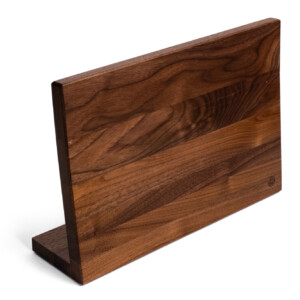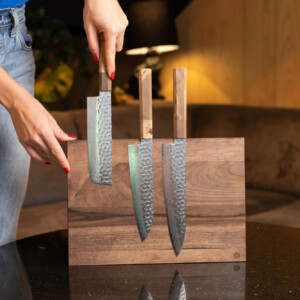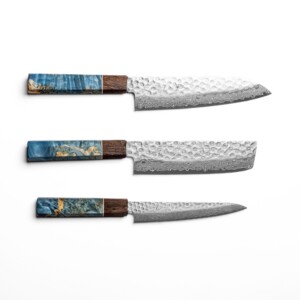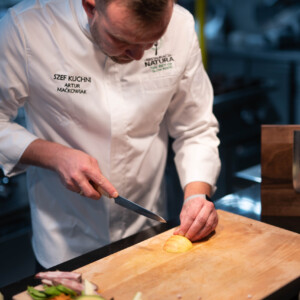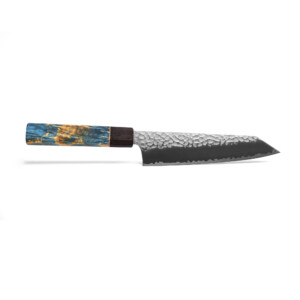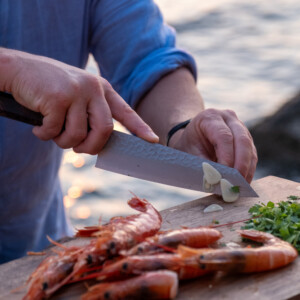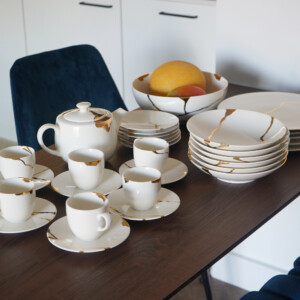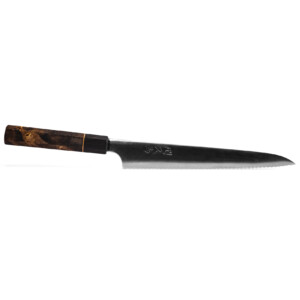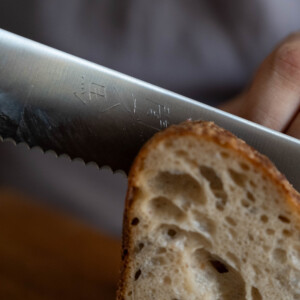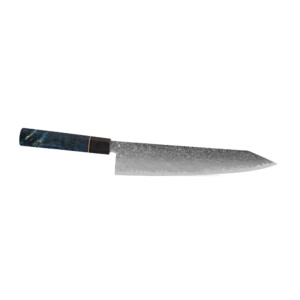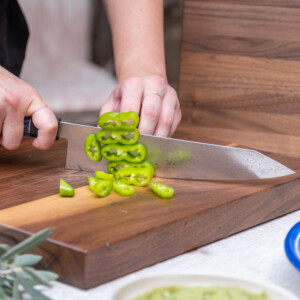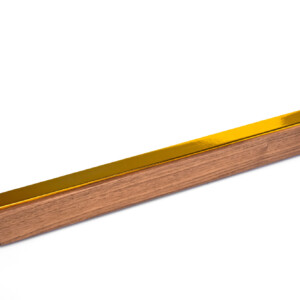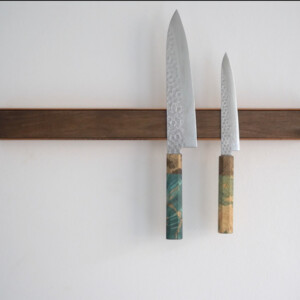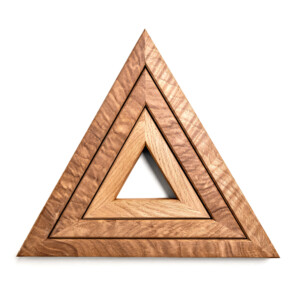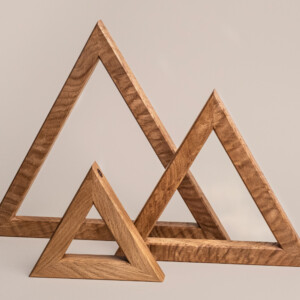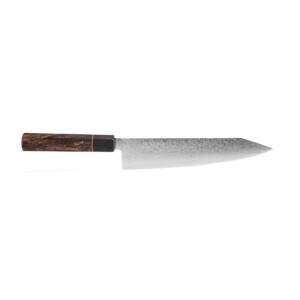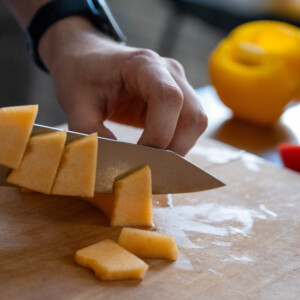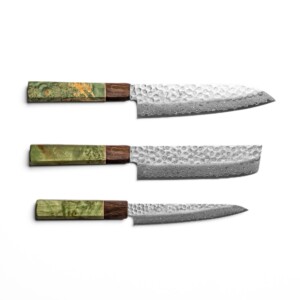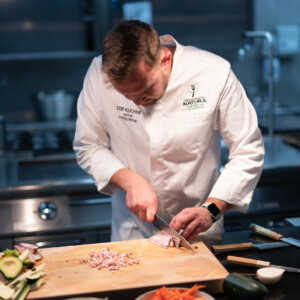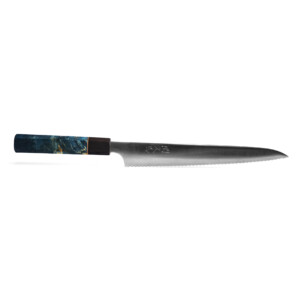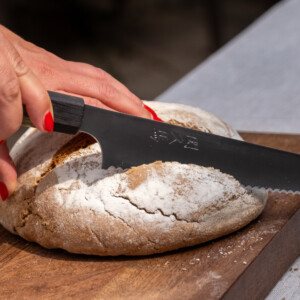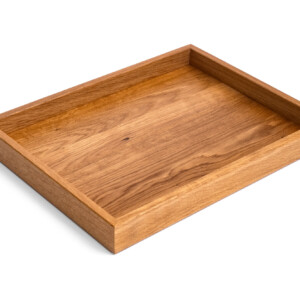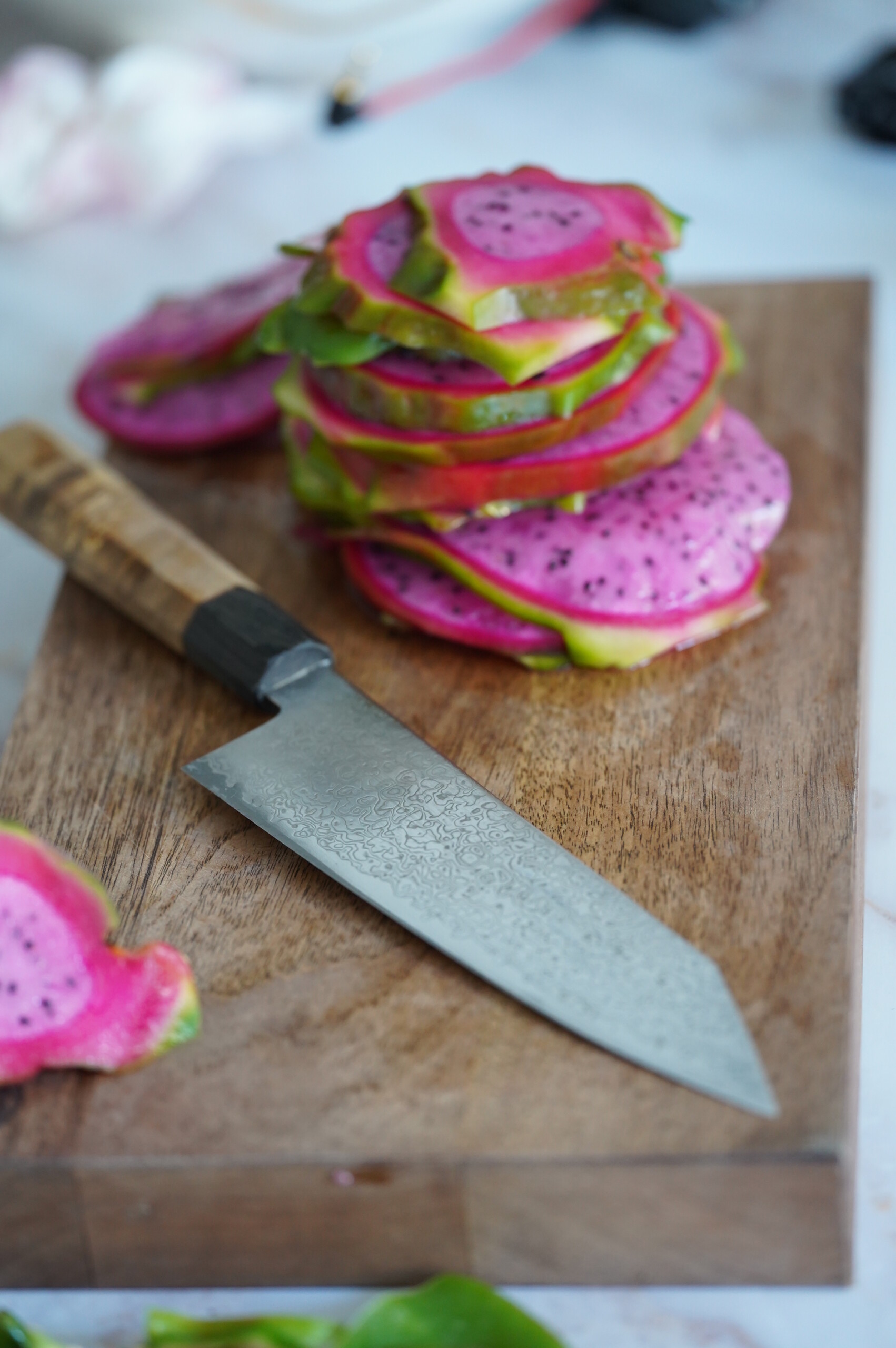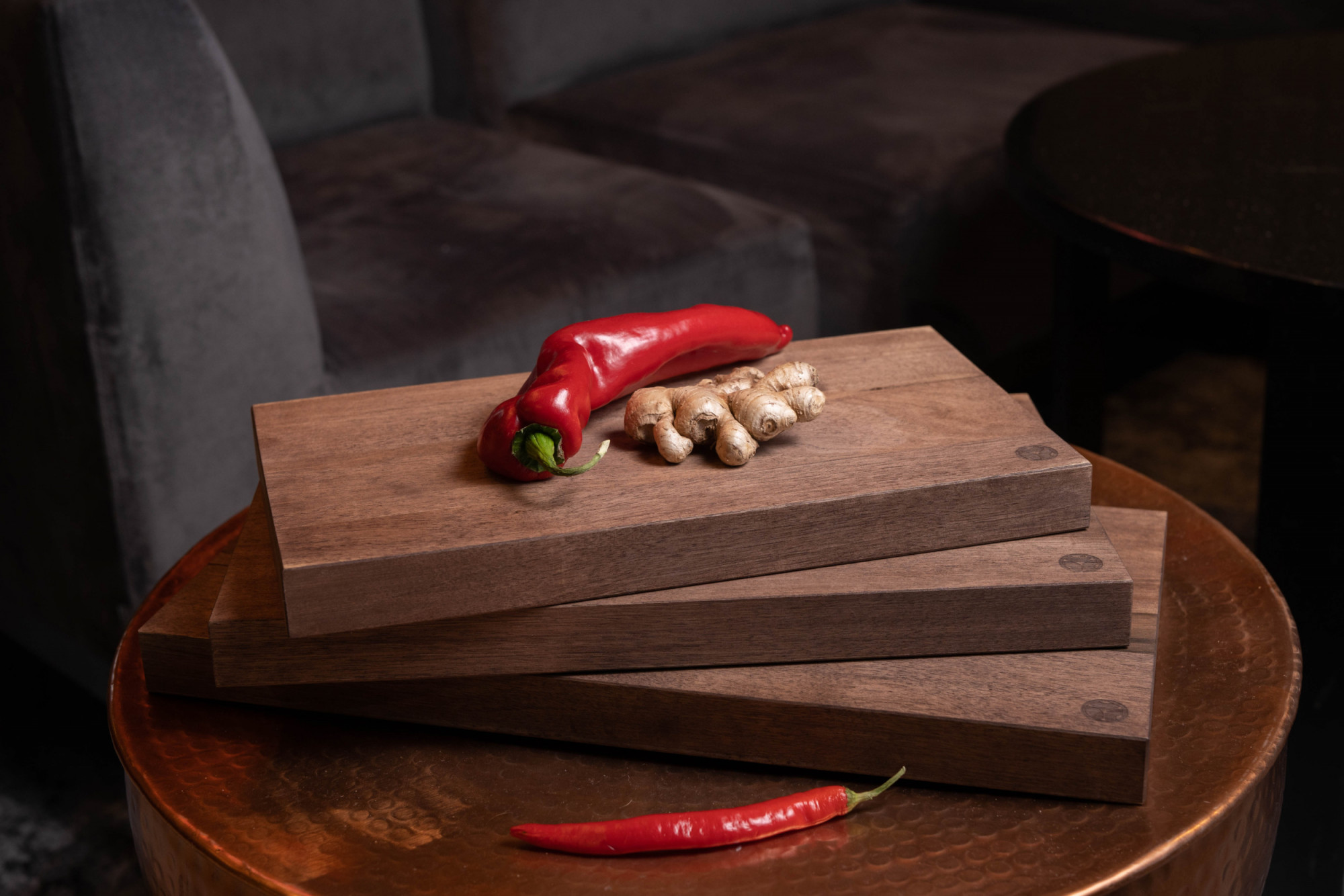To understand sharpness you must first understand the definition of an edge. An edge is the line of intersection of two surfaces. A highly sharpened edge is one, where the two sides are highly polished to form a very fine edge. Sharpening is the means to that very fine edge.
What is sharp and how to test it?
There are countless ways of testing knives and tools for sharpness. We believe the easiest way to test sharpness is to use the knife on ingredients of daily with easy structure (one, which does not have a bone e.g.). If it does not cut fast and cleanly, it needs sharpening. The knife should be able to cut vegetables with almost no downward pressure. On a fillet or skinning knife, it should be able to cut very quickly without having to saw through the meat.
If you really want to get down to fine-tuned levels of sharpness there are a few more tests you can use. Our favourite is to take a piece of paper and hold it vertically. Although, we admit, we also love to see and do the fruit ninja test 🙂
Ps. If you’ve never played in that game, watch it in action, where a young and talented British blacksmith Alec Steele tests the sword he made:
1. Slicing paper
..but in case you don’t have a sword and pineapples at hand, only your kitchen knife, then if you try to cut it with a dull knife, the paper will crumble beneath the knife. A sharp knife will cut it cleanly when use a slicing motion to cut through the paper. A razor sharp knife can cut the paper cleanly by just pressing down on the edge of the paper without any slicing at all.
Another factor affecting edge sharpness is the angle it is sharpened. The lower the angle, the sharper the blade becomes. However, the lower the angle, the weaker the edge becomes. Very low angle blades like a razor blade or a fillet knife will ultimately have a sharper edge than high angle tools such as an axe, but that edge will not last as long and will require more frequent resharpening.
If you can slice paper effortlessly with your knife and it doesn’t catch and tear then your knife is reasonably sharp and ready to work. Now, there are levels of sharpness much greater than being able to slice plain old printer paper, but a knife that can do this trick is sharp. This trick can also be used to see if there are any hidden dull/damaged sections of your edge.
In this video, you can see a very dull knife that needs to be properly sharpened. Remember, that dull knife is NOT safe to work with.
https://www.youtube.com/watch?v=ke14ue1zaw4
2. Slicing magazine or phone book paper
We know, it looks like the same trick as before BUT because of how thin and glossy these types of paper are, the more difficult it is to catch with an edge. A knife that can slice effortlessly through the phone book or magazine paper, especially if it is rolled up, is very sharp. Maybe even sharp enough to shave with. (but please, don’t try it at home 🙂 ).
3. Shaving sharp
If you can shave arm hair with your knife you probably don’t need to read further and you can safely just go back to work 🙂 While we recommend caution using this method, it can be very useful. A dull or even moderately sharp knife will just fold over your arm hairs without cutting. A well-sharpened knife will cut almost all of the hairs in one pass. A very sharp knife will cut all the hairs in its path. This level of sharpness can only be attained using the finest abrasive materials.
https://www.youtube.com/watch?v=m98c7Al1E4s
4. Fingernail trick
Stick out your index finger and carefully and gently lay the edge of your knife on your fingernail so the knife is perpendicular to your finger. If your knife bits into your fingernail with absolutely no pressure AND doesn’t slide around, then your knife is still very sharp.
5. Slicing an onion
The skin on an onion is very thin and slippery. If your knife can easily catch and bite into the skin of an onion you’re in good shape.
What to do when your knife is not sharp?
Learn how to sharpen your knife here: How To Sharpen Your Kitchen Knife
You will need a sharpening tool. In our opinion the best tool for the job, used for hundreds of years (if not thousands) is the Japanese whetstone.
You can’t go wrong with a King stone! If you want to learn more about sharpening stones, read our article: Whetstone Buying Guide: How To Choose The Right Sharpening Stone?
